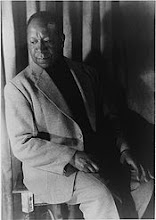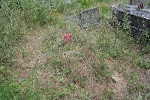Last week, Les Amis reported on the record breaking sale of Beauford's portrait of James Baldwin entitled The Sage Black.
This week, we're announcing additional recent sales of Beauford's work.
Phillips held its Modern and Contemporary Art Day Sale, Morning Session in New York on November 21, 2025. Lot 183 was a beautiful Beauford Delaney watercolor on paper, the provenance of which lists the Gloria and James Jones Collection.
Untitled
(1961) watercolor on paper
signed, inscribed and dated "Beauford Delaney 1961 Mallorca" lower right
25 3/4 x 19 3/4 in. (65.4 x 50.2 cm)
© Estate of Beauford Delaney
by permission of Derek L. Spratley, Esquire,
Court Appointed Administrator
Courtesy of Michael Rosenfeld Gallery, LLC, New York, NY
Beauford traveled to San Telmo in Mallorca with Charlie and Gita Boggs and Joe and Bernice O'Reilly during the summer of 1961. This trip took place after Beauford's suicide attempts in Greece.
In Amazing Grace: A Life of Beauford Delaney, biographer David Leeming states that "In San Telmo, he did eat well and rest, and, with the help of soothing talks with Bernice and Gita especially, managed to maintain a surface calm and even began to do some watercolors."
The estimated sale price of Untitled was $20,000-$30,000.
The actual sale price was $41,280, including a 29% buyer's premium.
Galerie Setze in Paris privately sold several sketches that Beauford executed in the 1930s.
(circa 1935) Charcoal
28 x 44 cm
© Estate of Beauford Delaney
by permission of Derek L. Spratley, Esquire,
Court Appointed Administrator
Courtesy of Michael Rosenfeld Gallery, LLC, New York, NY
(circa 1938) Pencil on paper
27 x 37 cm
© Estate of Beauford Delaney
by permission of Derek L. Spratley, Esquire,
Court Appointed Administrator
Courtesy of Michael Rosenfeld Gallery, LLC, New York, NY
Though the title of this work indicates that the sitter for the portrait was James Baldwin, the date attributed to the work and Beauford's own cryptic inscription make this highly unlikely. Baldwin reportedly met Beauford when he was sixteen years old—this means he could not have sat for Beauford prior to 1940.
Galerists Sandra and Eric Setze reported that Beauford gifted these works to Professor Michel Fabre, whose son, Pierre Fabre, received them through inheritance.
The sale price of these works is undisclosed.









